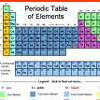Skip over navigation



Or search by topic
Number and algebra
Geometry and measure
Probability and statistics
Working mathematically
Advanced mathematics
For younger learners
Cobalt Decay
Age 16 to 18
Challenge Level 





- Problem
- Getting Started
- Student Solutions
- Teachers' Resources
Do you think it will be easy to distinguish between each of the isotopes of cobalt?
Imagine to start that that the sample consists of a single isotope of the cobalt. Would such a sample have too much or too little cobalt at each of the times indicated? How could you adjust the sample to bring it in line with the numbers indicated?
This problem makes use of chemistry concepts found in A-level. The main fact of importance is that in each half-life half of the cobalt will transform into other matter, the vast majority of which will remain in the sample. Mathematically, you will need to use linear algebra, simultaneous equations such as typically encountered at post-16 level, although a simpler numerical analysis will allow younger students to engage with the problem.
Imagine to start that that the sample consists of a single isotope of the cobalt. Would such a sample have too much or too little cobalt at each of the times indicated? How could you adjust the sample to bring it in line with the numbers indicated?
This problem makes use of chemistry concepts found in A-level. The main fact of importance is that in each half-life half of the cobalt will transform into other matter, the vast majority of which will remain in the sample. Mathematically, you will need to use linear algebra, simultaneous equations such as typically encountered at post-16 level, although a simpler numerical analysis will allow younger students to engage with the problem.
You may also like
A Method of Defining Coefficients in the Equations of Chemical Reactions
A simple method of defining the coefficients in the equations of chemical reactions with the help of a system of linear algebraic equations.
Mathematical Issues for Chemists
A brief outline of the mathematical issues faced by chemistry students.
Reaction Rates
Explore the possibilities for reaction rates versus concentrations with this non-linear differential equation

